inFamous: Second Son is likeable, but not yet loveable
An hour with Second Son suggests this could be the best yet, but can it push the series towards greatness?
I like inFamous games, but I've always wanted to love them. I've always felt I should love them, in fact, given that they blend acrobatic open-world chimney hopping with the crackle and fizz of elemental superheroics. inFamous 2 brought me close to love - mostly, granted, because you could kill street musicians - but it couldn't entirely escape from a handful of problems that had troubled the original.
The tech has traditionally been a little shonky, for example, offering bland outdoor environments that blur into a soupy mist before you can plot a satisfying path between A and B. The missions tend towards the unimaginative. Your combat powers are a little lacking in impact, and - despite a few good moments - Cole MacGrath, the lead, never had quite enough of a personality to make you warm to him. The end result is good-natured and often fun, but the clean edges and the sharp characters that define Sucker Punch's earlier work on the brilliant Sly Cooper games are mysteriously absent. inFamous often feels like a comic book series that struggles to sustain the brashness, the immediacy, of an actual comic book.

All of which makes Second Son an interesting proposition: there's the new hardware it's running on, of course, and there's a new lead, the young graffiti artist Delsin Rowe, who comes with fresh superpowers. There's also a new setting in the form of the Emerald City: Seattle. It's Sucker Punch's back yard, which should hopefully give the team a kind of home advantage, and it has both the perfect counter-culture ambience to stage a tale of government crackdowns and punkish mutant outsiders, and an ideal mix of flat-roofed commercial districts and gleaming steel towers to climb. This week I got to try the whole thing out for myself. After an hour and two missions? Well, I like Second Son. I just don't love it yet.
The good news is that the new hero's a definite improvement. With inFamous 2's positive karma ending meaning the old leading man's presumably out of the way permanently - although I did notice a sign for Cole McG's Electronics store as I scrabbled around the mid-town streets - the stage is clear for an injection of genuine personality. Delsin's younger, with a gaunt frame that gives him an appealing kind of vulnerability, and he's also voiced by Troy Baker, which means that an entirely acceptable wisecracking script receives a little unearned depth of characterisation too. He's a Conduit - a metahuman, basically - in a world that's cracking down on Conduits, and Baker makes Delsin come across like an outsider: smug but fragile. You get a sense that the job might be a bit too big for him, and that's quite exciting.
Delsin can assume the powers of other Conduits, apparently, and the current demo offers neon and smoke flavours, which you can switch between by charging up at certain hotspots. (Storefront signage gives you the former, chimneys and wrecked car engines provide the latter.) Both come with truly glorious graphical effects - dancing scribbles of pink light and ember-thick orange flame respectively - and hopefully throughout the course of the game they'll grow to give you really distinct options, too. Smoke will eventually allow you to do stuff like slip through grates, while neon powers are allegedly tuned towards precision. For the duration of this demo, though, they were fairly handy at a lot of the same basic things: both have a melee option, both have a ranged option, both offer grenades.
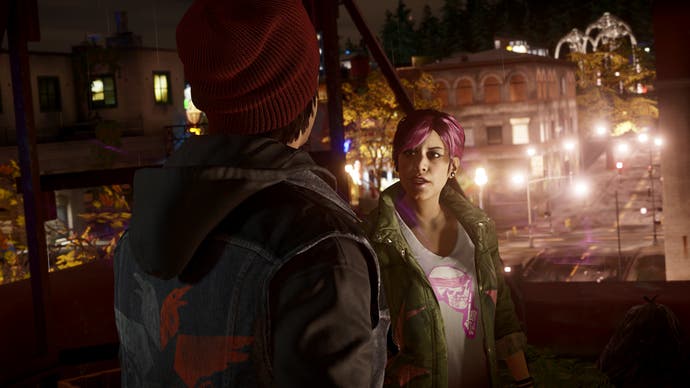
Neither provides the glorious thwack and smash of video game combat at its best, alas. Maybe the sound effects are too soft, maybe the animation is too restrained and the camera shake and haptic feedback too gentle? Maybe it's something deeper and more mysterious that an idiot like me could never understand. Whatever's missing, it means that Second Son's combat is absolutely fine, but it doesn't yet thrill you, regardless of how you approach it. Melee lacks a sense of physical connection, and while the ranged option's definitely improved over the old days with the switch to a run-and-gun model (you can still opt for the over-the-shoulder approach as and when, but it's much nicer to just dash about firing at a reticule in the centre of the screen), both laser beams and smokey projectiles feel tame and weightless. The lasting impression, bizarrely, is of a game which can't quite shrug off its good manners and give you a proper dust up.
Meanwhile, the missions in the current build are worryingly generic. The karma system that defined Cole MacGrath's adventures has been retained here, and the demo provides the option to play through a sequence in which Delsin trains a wayward Conduit protégé named Fetch, either taking the heroic option by teaching her self-control as they mess up some drug dealers down by the harbour (I have no idea how messing up drug dealers is meant to teach self control, incidentally), or corrupting her with the ruthless path and heading out to trash some anti-Conduit rallies downtown.
In implementation, both suggest a game that's struggling to move outside the limited template of standard open-world action adventures. Sorting out the dealers involves searching through a series of houseboats for drug shipments, clearing the area of foes, and then trailing a van through darkened streets without being spotted. Tackling the rallies means breaking up several late night protests as you hunt for a specific baddie, and then fighting your way into a traffic tunnel as you chase a teleporting Conduit with a rock-based attack. Both end with a teaser for expansive new powers, but the promise of treats isn't enough to make up for their absence elsewhere. Teleporting mini-bosses, trailing sequences: these are all acceptable distractions, I guess, but they don't linger in the mind like a really good mission can. The whole thing's brisk and colourful - and I also appreciate that it's notoriously tough to reveal the texture of this sort of game in an hour-long demo - but there's no escaping the fact that, for all its tweaks, inFamous on PS4 is not yet looking like the reinvention - or even the thorough recalibration - that I suspect the series could really do with.

Not quite, anyway. If there's one thing that really does stand out, it's Seattle itself - sharp-edged, gorgeously textured, personable, and filled with a nice mix of wide streets and interconnected rooftops to race across. Using the neon power, you can now hold down a face button and turn into a scrawl of light as you rush over the ground and up the side of buildings without skipping a heartbeat, or you can still shimmy along gutterings and across ledges the old-fashioned way. However you move, the fuzzy horizons that marred the older inFamous games do not appear to be a problem any longer - and that stuff counts in a game that allows you to zip over a whole city in a few minutes. Elsewhere - in facial animation, lighting, geometry, particle effects - Second Son has all the next-gen tech improvements you might expect, but that draw distance is the one that really counts.
An hour in Seattle left me wanting a bit of free time to explore away from the tug of the main missions, in fact. It also offered a reminder of how much potential richness there is in this series - and of how much I want Sucker Punch to do it justice over the full course of the final game.
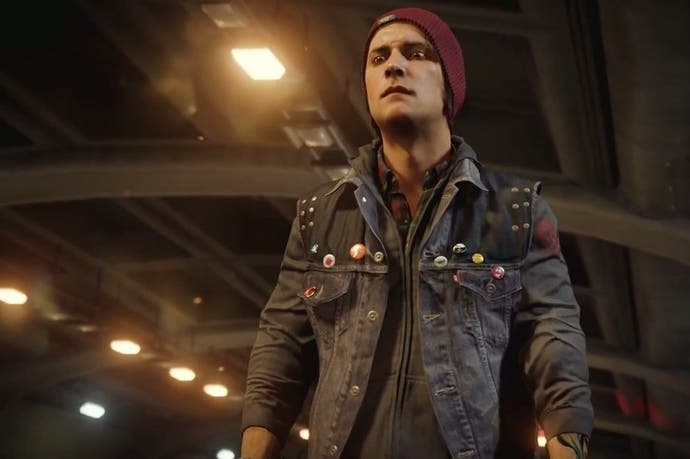

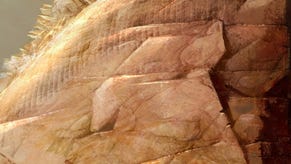
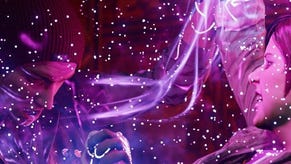

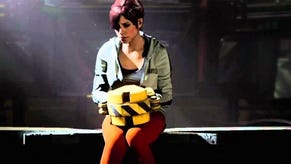



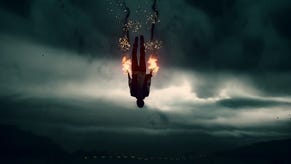

.png?width=291&height=164&fit=crop&quality=80&format=jpg&auto=webp)




.jpg?width=291&height=164&fit=crop&quality=80&format=jpg&auto=webp)
